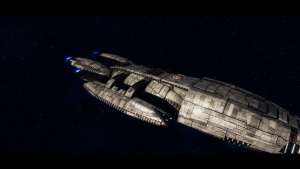Genesis threads. The database.
< Loosely related to other posts. Creative ideas within the theme>
Steven Williams was 48 years old, with mostly dark thinning hair. He had been working various Information Technology contracts for the past dozen years. He had worked for the Pentagon before as well as the CIA, and the NSA.
This contract was open ended and required he pass another battery of background checks.
He had been given access to a vast database that had been obtained by NASA and quickly transferred into the intelligence community. He had known the hardware engineers who had worked on that side of the project. A large number of hard disks were recovered from a computer system that simply had not been compatible with anything on Earth.
The IT engineer, ran his hand through his hair, adjusted his glasses and continued to stare at the 27 inch screen on his desk. The hardware engineers had worked 21 months on their part of the project. Drives had been recovered, his friends said that they were from a dead technology stream dropped by a high tech start up a dozen years ago.
This lie was laughable. Everyone knew that the drives had been recovered from an alien space craft of massive proportions. Nobody was told where it was. Some said between moons of Jupiter, others moons of Saturn. It had been hidden away for many hundreds of thousands of years.
The engineering task was substantial. The drives had sat without power for many centuries. The vacuum seals on the platters had disintegrated, allowing just and debris onto the drive platters.
Each of the drives had been disassembled in a clean room, carefully cleaned and installed into custom drive containers built under a special contract between the DOD and Western Digital. It had taken months to make the drives work. There had been damage to many of the platters and the data was far from complete.
Still, thousands of drives had been recovered and rebuilt into new drive assemblies. Nobody knew what the system was for writing the data on the drives. Nobody had realized what they had until Williams had had a breakthrough some hours ago.
Based on the reports from the recovery crew they had extracted disk drives from a number of systems aboard the mysterious space ship wreck. The rebuild drive array had been networked and organized the way it had been recovered.
What Williams had discovered was that four of the drive sets were actually copies of one and other. Though there was damage to almost every platter, all the binary data was written to four places. So if it was missing in one place, the same data was available on one of the three redundant drive sets.
The problem of course was figuring out how the data was organized. Williams did not know the alient operating system. He saw binary data, most likely encrypted. Working for the US government however, he obtained a lot of time on a lot of supercomputers to test his theory.
The former hacker had written a custom program to analyze patterns. It had run for six weeks and detected what was most likely some kind of database. A dozen forms later he had copied the data to a modern disk array. It was the best EMC could provide.
Then Williams had to write a program to figure out how to read the database. That had taken 8 weeks and a lot of weekends. The divorced IT guru’s relationship with his current girlfriend had suffered. But he had gotten the job done.
He had requested and received photos of the ship wreck and run them through some language recognition algorithms developed at MIT. The name of the ship was Galactic or Galactica. The experts were not sure. The script looked like a combination of Greek and Hebrew.
It was 4 am and his program, borrowing time on a dozen different government funded computer arrays had hit pay dirt. Of course the language was not English, but he had the MIT code built into the interface.
On what looked like a really bad Windows smartphone interface, Williams poked and pecked at a touch screen. What he saw made his jaw drop.
Video log files. Williams knew these would not play. He would have to design a codec to properly decompress the data and show it on the screen.
Still there was a treasure trove of information.
History of the Twelve Colonies of Kobol
Specifications for for computer and information systems.
Specifications and maintenance manuals for a number of craft, one designated snake or viper, the other raptor.
Scientific Specifications for FTL, Faster Than Light jump propulsion systems.
Plans and designs for a Class Mercury Battlestar.
Williams clicked that. After a delay there were several graphic images and documents available. Roughly his database translator had made them into PDF files. He was looking at them on a powerful Linux based computer.
“Well how do you like that?” Williams mused. “I may not be able to build a death star, but it looks like with enough money we can build ourselves a battlestar.”
Williams yawned, sent an email to his supervisor, kicked a backup and walked out of his office. He needed a couple hours of sleep before the firestorm he had kicked up with his data recovery. On Monday he would have to write a CODEC to watch the video.

